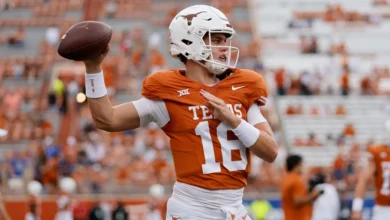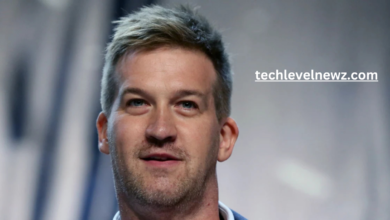The Impact of the Shohei Ohtani Injury: What Fans and Analysts Need to Know

Introduction
Shohei Ohtani, a two-way superstar in Major League Baseball (MLB), has captured the attention of fans and analysts alike with his unprecedented ability to both pitch and hit at an elite level. Since his debut with the Los Angeles Angels, Ohtani has not only redefined the role of a player in today’s game but also set new standards for athleticism and versatility. His extraordinary talents have drawn comparisons to legends of the game, making him one of the most exciting athletes in sports today. However, the unfortunate reality of professional sports is that injuries can sideline even the most talented players, and Ohtani is no exception.
In mid-2024, Ohtani suffered a significant injury that sent shockwaves through the baseball community. The circumstances surrounding this injury are crucial for understanding its impact not just on Ohtani’s career but also on the Los Angeles Angels and the league at large. As fans and analysts closely monitor the developments, it becomes essential to grasp the nature of the injury, the recovery process, and its broader implications for the sport. This article delves deep into Ohtani’s injury, detailing its effects on his career and the league while offering insights into what fans can expect in the coming months.
Details of the Injury
Description of the Injury
Shohei Ohtani’s injury, classified as a tear in his ulnar collateral ligament (UCL), is one of the most concerning types of injuries for a pitcher. This specific ligament is critical for the stability and functionality of the elbow joint, particularly during the throwing motion. The injury occurred during a game in June 2024, when Ohtani experienced discomfort while throwing a pitch. Initially thought to be a minor issue, subsequent medical evaluations revealed the severity of the tear, leading to immediate discussions about the necessary course of treatment.
The implications of a UCL injury are profound, especially for a player of Ohtani’s caliber. The recovery often requires surgical intervention, commonly known as Tommy John surgery, which could sideline him for a significant portion of the season, if not longer. Fans were left anxious and uncertain about the future of their beloved player as the medical team began outlining potential treatment options. Given Ohtani’s dual role as a pitcher and hitter, this injury raised questions about how it would affect not just his pitching career but also his prowess at the plate.
Immediate Impact on Performance
Ohtani’s injury had an immediate and visible impact on the Angels’ performance. Prior to the injury, he was enjoying another outstanding season, posting impressive numbers both as a pitcher and a hitter. His ability to contribute in multiple ways made him the cornerstone of the team, and his absence left a significant void in the roster. The Angels struggled to fill the gap left by Ohtani, leading to a series of disappointing results that threatened their chances of making a playoff run.
Teammates and coaches expressed their concerns about the impact of losing such a critical player. The locker room atmosphere shifted as players grappled with the reality of Ohtani’s injury, knowing that they would need to step up their game to compensate for his absence. Fans also voiced their frustrations on social media, showcasing a mix of disappointment and concern for Ohtani’s long-term health. The excitement surrounding his dynamic playing style turned into apprehension as the team faced the daunting task of adjusting to life without their star player.
Medical Evaluation and Diagnosis
After the injury, Ohtani underwent a comprehensive medical evaluation to determine the extent of the damage to his UCL. The process involved advanced imaging techniques, including MRI and X-rays, to gain a clear understanding of the injury’s severity. Medical experts were brought in to assess the situation, and their evaluations led to a consensus: surgery was the most viable option to ensure Ohtani’s long-term health and functionality as a pitcher.
Official statements from the medical team emphasized the importance of taking a cautious approach to treatment. The timeline for recovery would largely depend on the type of surgery performed and Ohtani’s response to rehabilitation. It was evident that the decision to undergo surgery was not taken lightly; it would impact his ability to contribute to the team both this season and in the future. Ohtani’s resilience and determination would be put to the test as he embarked on a challenging road to recovery.
Recovery Process
Treatment Options
In light of Ohtani’s UCL injury, the treatment options available primarily revolved around surgical and non-surgical interventions. Tommy John surgery is often recommended for athletes with UCL tears, as it offers a high rate of success in restoring function. This surgical procedure involves replacing the damaged ligament with a tendon taken from another part of the patient’s body or from a donor. While the surgery has become relatively common in the world of professional baseball, it still requires a lengthy rehabilitation process post-operation.
Non-surgical options, such as rest, physical therapy, and corticosteroid injections, are typically considered for less severe injuries. However, given the nature of Ohtani’s injury and his role as both a pitcher and a hitter, surgical intervention was deemed necessary to preserve his long-term career prospects. As fans followed the news, the anticipation of Ohtani’s surgery and subsequent recovery became a focal point of discussion in sports circles, highlighting the importance of expert medical care in the journey of professional athletes.
Expected Timeline for Recovery
The expected timeline for recovery following Tommy John surgery typically spans 12 to 18 months. For Ohtani, this meant that he would miss a significant portion of the ongoing season, with hopes of a return late in the following year. The recovery process is structured in phases, starting with rest and immobilization, followed by gradual reintroduction to physical activity and pitching drills.
Milestones in the recovery process are critical to monitor. The initial months focus on healing, followed by stages of physical therapy aimed at restoring strength and flexibility in the arm. Once Ohtani meets specific benchmarks, he will progress to more advanced throwing programs, culminating in a return to game action. The road to recovery can be fraught with setbacks, and the psychological component of rehabilitation is equally vital. Athletes often face mental hurdles as they work to regain confidence in their physical capabilities.
Challenges in Recovery
The journey to recovery from a UCL injury is not without its challenges. While the physical aspects, such as pain management and adherence to rehabilitation protocols, are crucial, the mental and emotional components are equally significant. Ohtani will need to navigate the psychological barriers that accompany a major injury, including fear of reinjury and the pressure to perform at an elite level upon return.
Moreover, the potential for complications during the recovery process cannot be overlooked. Some athletes experience setbacks that prolong their return to play, leading to frustration and uncertainty about their future. For a player like Ohtani, who has built a reputation as a dominant force in baseball, the pressure to return quickly and effectively is amplified. The Angels and their fan base will be watching closely, hoping for a successful recovery that allows Ohtani to reclaim his status as one of the game’s premier talents.
Broader Implications
Impact on the Los Angeles Angels
Shohei ohtani injury casts a long shadow over the Los Angeles Angels, affecting team dynamics and performance. Without their star player, the Angels face the daunting task of recalibrating their lineup and strategy. The absence of Ohtani’s contributions as both a top-tier pitcher and a powerful hitter is felt in every game. Team morale may also be impacted, as players struggle to adapt to a season without one of their key leaders.
Management’s response to Ohtani’s injury will be crucial. The Angels will need to explore their options, potentially making trades or promoting players from their farm system to fill the void. Fan expectations remain high, and the organization must balance the urgency of competitive performance with the long-term health of their star player. As the season progresses, the Angels’ ability to maintain competitiveness will be tested in Ohtani’s absence.
Effects on the MLB Landscape
The ripple effects of shohei ohtani injury extend beyond the Angels, influencing the broader MLB landscape. His absence reshapes the MVP race, as fans and analysts reevaluate candidates who can fill the void left by his elite performance. Teams vying for playoff positions may recalibrate their strategies, knowing that they are facing a weakened Angels team.
Additionally, Ohtani’s injury could have implications for future contract negotiations. His dual-threat ability has positioned him as a marquee player, and any uncertainty surrounding his health may influence discussions regarding his next contract. Teams across the league will be closely monitoring his recovery and performance to gauge his value in the market.
Fan Reactions and Community Support
The fan response to shohei ohtani injury has been overwhelmingly supportive, showcasing the strong bond he has built with his audience. Social media platforms became a hub for fans expressing their concern, sending messages of encouragement and solidarity. Hashtags dedicated to Ohtani’s recovery trended as supporters rallied behind their favorite player, underscoring the emotional connection between athletes and their fans.
Community initiatives have also emerged in light of the injury. Fundraisers and awareness campaigns centered around UCL injuries and rehabilitation are gaining traction, reflecting the communal spirit of Ohtani’s fanbase. This collective support not only highlights the impact of his presence on and off the field but also serves as a reminder of the importance of mental and emotional well-being during recovery.
Conclusion
In summary, shohei ohtani injury is a significant moment in the landscape of Major League Baseball. Understanding the details surrounding the injury, the recovery process, and the broader implications helps illuminate the challenges faced by both the player and the team. As fans and analysts continue to monitor his progress, the hope remains that Ohtani will make a full recovery and return to the field, further enriching the game he loves.
The journey back from a UCL injury is long and arduous, but Ohtani’s determination and the support from the Angels organization and his fanbase will be crucial in navigating this difficult chapter. While the immediate impact of his injury is felt keenly, the resilience of both the player and his community offers a glimmer of hope for the future of his remarkable career.




